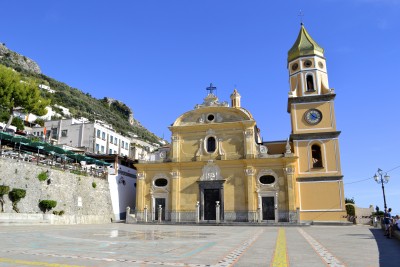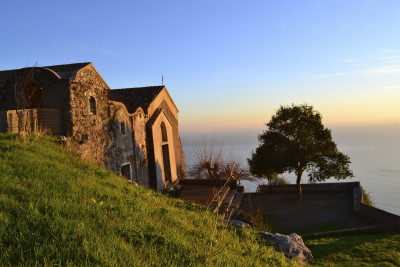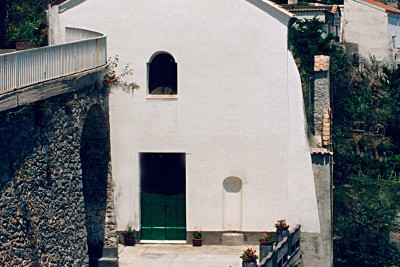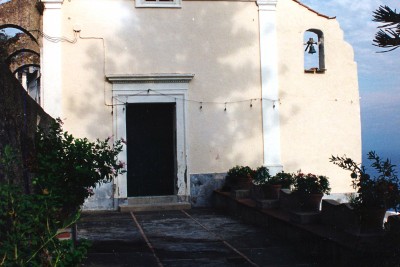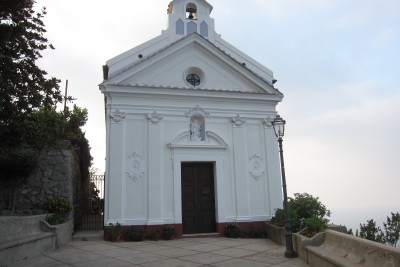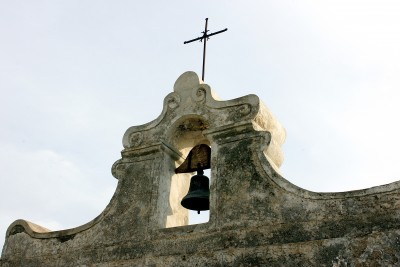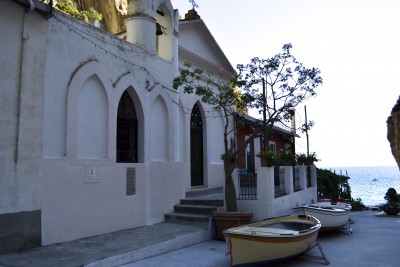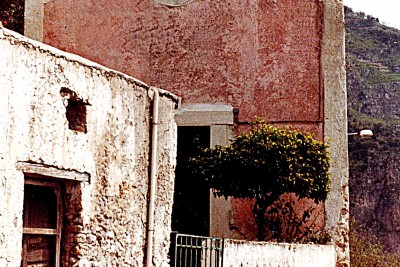The Shrines of Praiano
Scattered all over town, they were built to protect the local population








"The observant tourist walking through the streets of Praiano will notice numerous ancient fresco and ceramic shrines that bear witness to the strong religious sense of the local community.” (from "Shrines" by Vito Pinto)
Scattered here and there, the "shrines", or micro-chapels made of majolica tiles or painted plaster, are a characteristic feature of Praiano.They were built to protect the houses and those who lived in them.
1) Name of the shrine: L'Addolorata
Address: via Lama
Date: 17th century
Artist: unknown
Description: fresco on slate

2) Name of the shrine: Holy Family
Address: via Duomo
Date: 1763
Artist: unknown
Description: Neapolitan school’s ceramics

3) Name of the shrine: Immacolata Concezione
Address: via Masa/Rezzola
Date: 18th Century
Artist: unknown
Description: Neapolitan school’s ceramics

4) Name of the shrine: Madonna delle Grazie
Address: via Costantinopoli<
Date: 1900 ca
Artist: unknown
Description: artistic composition on ceramics from Vietri

5) Name of the shrine: Saint Joseph
Address: via San Giuseppe (along the mountain path that leads to the Domenican convento of Santa Maria a Castro)
Date: 17th century
Artist: unknown
Description: artistic composition on Neapolitan school’s ceramics

6) Name of the shrine: Saint Luke
Address: via Umberto I
Date: 1900 ca
Artist: unknown
Description: ceramics

7) Name of the shrine: Madonna del Rosario
Address: via Oratorio
Artist: unknown
Description: ceramics

8) Name of the shrine: Saint Anne
Address: via Masa
Date: 1868
Artist: unknown
Description: ceramics

9) Name of the shrine: Madonna del Carmine
Address: via Marconi (near the restaurant “Che Bontà”)
Date: 18th century
Artist: unknown
Description: ceramics

10) Name of the shrine: San Gennaro
Address: via Francesco Russo
Date: 1900 ca
Artist: unknown
Description: ceramics

11) Name of the shrine: Virgin Mary with Jesus
Address: via Marconi
Date: 1700 ca
Artist: unknown
Description: ceramics

12) Name of the shrine: Addolorata
Address: via Costantinopoli
Date: 1757
Artist: unknown
Description: ceramics

13) Name of the shrine: Virgin Mary with Jesus & Saint Anne
Address: via Umberto I
Date: 1763
Artist: unknown
Description: ceramics

14) Name of the shrine: San Luca
Address: piazza San Luca (on the bell tower)
Date: 1790
Artist: unknown
Description: ceramics



